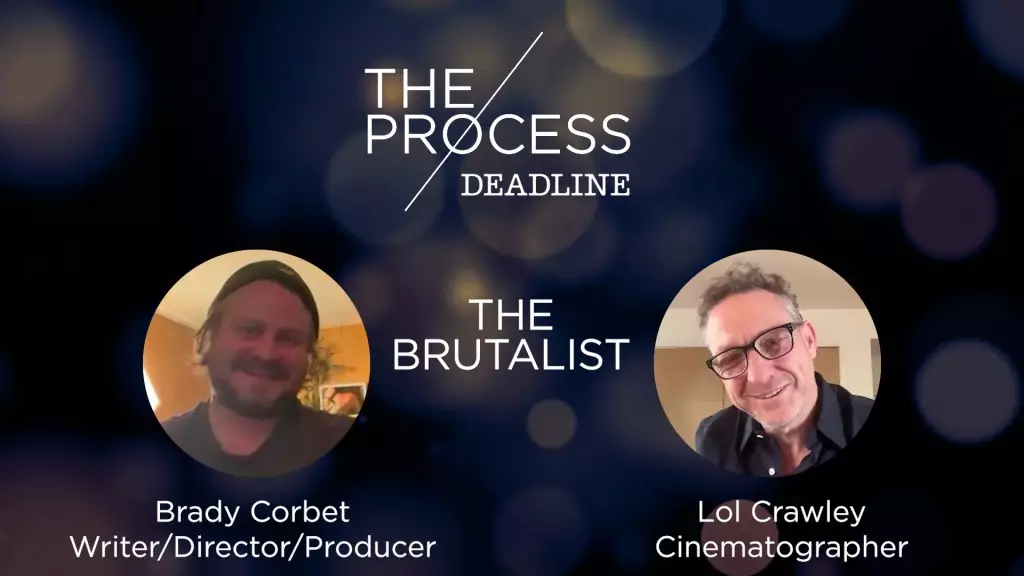The film industry thrives on collaboration, with directors, producers, and cinematographers often forming unique partnerships that yield striking cinematic results. One of the more notable collaborations in recent years is between Brady Corbet and cinematographer Lol Crawley, who have joined forces for “The Brutalist.” This film represents the third project they have worked on together, following Corbet’s previous ventures, “Vox Lux” and “The Childhood of a Leader.” Their familiarity with each other’s styles and sensibilities underscores the importance of a shared creative vision in film making.
Corbet himself has suggested that their body of work has drawn both praise and critique, characterized by an ambivalence toward its ambition. In a candid discussion, he reveals that despite aiming for a grand vision, the essence of his narratives tends to be more intimate and focused on character development. This notion reveals an interesting dichotomy: the ambitious scale that audiences might anticipate contrasted with the tightly woven stories that emerge from an emphasis on personal experiences.
Transformation Through Collaboration
Corbet articulates his creative process as one that begins with a narrow focus—represented visually by the gesture of enclosing his hands in a small circle. The filmmaking journey, however, widens this scope as collaboration with various departments takes place during pre-production and onward. He expresses an evolution of confidence in this collaborative dynamic, acknowledging that the collective effort inevitably creates a film that resonates on a broader scale than initially envisioned.
This reflective mindset is crucial for filmmakers, as it encourages them to trust the earned expertise of their collaborators. The collective contribution of skilled professionals—from costume designers to set decorators—plays a significant role in elevating the narrative beyond the personal vision of the director. Such a process transforms the film from a solitary endeavor into a collective artistry that is inherently cinematic.
Crawley adds depth to this discussion by elaborating on what makes “The Brutalist” distinctively cinematic. He emphasizes shooting techniques that convey a bold visual language while anchoring the narrative through its characters. The ambition of crafting pivotal, ambitious shots operates on a foundation of simplicity and clarity. It’s not just about the grandeur of images but the synergy between spatial design and actor performances that renders a scene impactful.
This approach highlights an important aspect of cinematography: the space must breathe life into the characters. Each frame should tell a story that resonates with viewers on an emotional level, effectively merging the physical surroundings with the internal struggles and triumphs of the characters.
While the beauty of filmmaking is celebrated, Corbet and Crawley do not shy away from discussing its challenges. The sheer exhaustion and intensity present on set, often described as “unhealthy,” are an inherent part of the creative experience. The duo humorously notes the chaotic atmosphere, whereby a film set becomes “240 strangers that are really angry all the time.” This raw honesty serves to demystify the glamor often associated with movie-making for outsiders who romanticize the process.
Crawley’s candid acknowledgment that a visit to a film set can quickly become tedious serves as an important reminder of the labor involved. By shining a light on the grueling nature of the film industry, their conversation invites a broader audience to appreciate not only the end product but the sweat and teamwork that brings it to fruition.
The narrative of “The Brutalist,” set in the aftermath of World War II, follows László Tóth, portrayed by Adrien Brody. As a Hungarian-Jewish architect who struggles to navigate life in the United States while awaiting his wife amidst upheaval in Eastern Europe, Tóth’s experience speaks volumes about trauma and resilience. The on-screen journey reflects a historical context that is both poignant and relevant, capturing the complexities of human emotion against the backdrop of societal change.
With a stellar cast that includes Felicity Jones, Joe Alwyn, and others, “The Brutalist” has garnered critical acclaim, including multiple awards and nominations. These accolades not only affirm the film’s quality but also highlight the collective effort behind its creation. As the film continues to unfold within the cinematic landscape, examining the layers of personal and collaborative storytelling illustrates the rich tapestry of modern filmmaking. The journey of Corbet and Crawley is one of exploring ambition, intimacy, and the essential nature of collaboration, factors that are paramount in delivering a powerful cinematic experience.


Leave a Reply